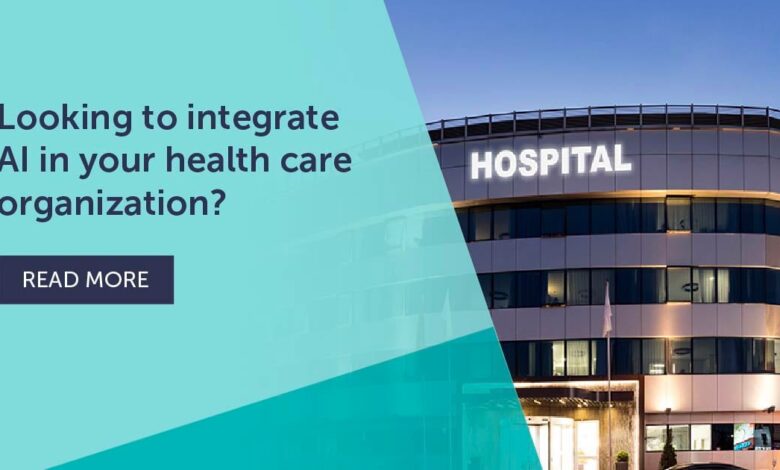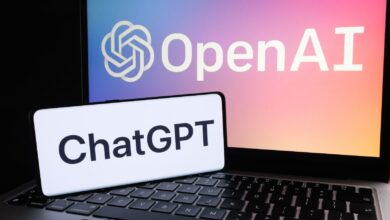The Future of AI in Health Care, Life Sciences: CLA

Key insights
- Artificial intelligence (AI) will continue as an ongoing trend in health care and life sciences (HCLS).
- Understanding AI fundamentals helps HCLS entities strategically determine valuable uses.
- Among risk areas to consider are cybersecurity, bias, and privacy.
What is artificial intelligence?
AI is the application of software, computers, or devices designed to perform tasks at or beyond human capabilities, particularly in areas requiring cognitive and analytical functions. This technology harnesses the principles of computer science, mathematics, and statistics, along with insights from various specialized disciplines.
AI can be categorized in several ways, including by subfields, such as traditional machine learning, computer vision, natural language processing, and reinforcement learning.
Traditional machine learning use cases
Machine learning (ML) is where computers are trained — via algorithms and statistical models — on data sets to find patterns. Machine learning is also an umbrella term since there are various subsets of ML depending on algorithms and approaches used.
Regardless of the type of machine learning approach, uncovering data patterns allows for many use cases — think of automating certain revenue cycle tasks, creating supply chain efficiencies, or uncovering previously unforeseen trends and insights within disparate data sets.
Having explored the broad capabilities of ML in identifying and leveraging data patterns, let’s delve into specific scenarios where these techniques are applied to drive tangible improvements and innovation.
Surfacing trends and insights
When you have data housed in multiple locations — a combination of files, on-premises databases, and third-party hosted software-as-a-service (SaaS) solutions — it can create inefficiencies or, worse, no line of sight into strategic information. Data lakehouses, structured databases, and ML can surface those insights.
For example, an organization has a dozen systems to capture and store data (clinical, employee, operations, financial). By migrating the data from these core systems into a single cloud storage database using automated data flows and pipelines, the manual workarounds are eliminated, and the data is now available for improved reporting and analytics. You can see generated trends or “ask” questions (i.e., prompts), which then surface insights in the AI response.
Predictive analytics (clinical decision support, insights)
Predictive analytics, an already widely used approach, can look at medical information (labs, treatments, visits, metrics) to predict outcomes based on data. For example, many hospitals or those in value-based care models use predictive analytics to assess which patients are more likely to be readmitted to the hospital and/or to better predict a patient’s disease progression. This is then used to develop patient care plans and avoid rehospitalizations or illness exacerbation. By leveraging predictive analytics, organizations can better view the data surrounding each patient to make better-informed care decisions.
Supply chain
ML can be deployed within the supply chain. It could automate supply chain aspects and life science manufacturing processes, predict future supply chain needs, and other logistics applications.
Natural language processing (NLP) use cases
NLP is an AI technology facilitating computers’ understanding of human language. In health care, NLP serves a crucial role in reducing clinicians’ administrative workload, streamlining documentation processes, and enhancing patient-provider interactions. By leveraging NLP, health care systems can more efficiently process and analyze the vast data involved in patient care.
Ambient clinical intelligence with advanced speech recognition
A major health care NLP use case alleviates the administrative burden of clinical documentation. To reduce the time spent on administrative functions and allow health care providers to focus on patients during visits, NLP is used with ambient listening to craft clinical notes during patients’ visits. Providers review clinical notes created before they go into the medical record. Electronic health record (EHR) companies are already working to embed these capabilities into their systems.
Generative AI
Perhaps you’ve heard of ChatGPT by Open AI. This type of ML uses large language models (LLMs). LLMs absorb more data than we as individuals can process and are trained on data to respond to prompts. LLMs are being tested and used in HCLS for tasks like responding to patient portal questions or drafting prior authorization letters. AI responses should be reviewed by appropriate personnel before communication, but any ability to reduce administrative burden is a huge benefit for busy clinicians.
Streamlining skilled nursing facility admissions
Leveraging the power of LLMs, health care providers can significantly expedite the admissions process to skilled nursing facilities. These models can swiftly read and comprehend clinical notes, identifying patients’ care needs — such as the necessary level of nursing support, required medical equipment, and available specialist care.
Beyond parsing information, AI can make informed recommendations about patient admissions. It provides these preliminary conclusions to health care staff for final deliberation, complete with reasons for its decisions, citing pertinent parts of clinical notes. This provides a thorough evaluation, matching patient needs with facility capabilities, facilitating a tailored care pathway. With AI’s assistance, the administrative load is reduced, enabling health care providers to focus more on patient care and less on paperwork.
AI conversational agents for enhanced patient engagement
AI conversational agents are increasingly used within health care to interact with patients. These sophisticated systems are adept at answering queries, arranging medical appointments, and even providing certain types of care, such as behavioral health support through existing digital health applications.
Regardless of the type of machine learning approach, uncovering data patterns allows for many use cases — think of automating certain revenue cycle tasks, creating supply chain efficiencies, or uncovering previously unforeseen trends and insights within disparate data sets.
Computer vision use cases
Computer vision represents another area of AI. This technology allows computers to decipher, process, and analyze visual data like humans, converting images and video into actionable insights. From analyzing medical images to managing health records, the applications of computer vision in health care are diverse and growing rapidly.
Revenue cycle management
Computer vision can be deployed to increase efficiencies and automate processes within the revenue cycle. For example, in accounts payable (AP) automation, AI automatically reads and inputs data from invoices, streamlining payment processes and enhancing accuracy. This standardizes manual processes and reduces employees’ workload.
Medical image analysis
Medical imaging analysis using ML is already being deployed in health care, particularly in specialties like radiology, ophthalmology, and dermatology. By processing images such as MRIs, X-rays, retinal scans, and skin lesion photographs, computer vision models can assist in diagnosing a wide range of conditions, from cancers to retinal diseases and dermatological issues. These models can identify subtle pathological indicators possibly imperceptible to human observers, empowering physicians to identify and intervene earlier.
Generative AI for medical imaging and simulation
Another form of generative AI — sometimes using a neural network architecture — can create images or simulations from textual prompts. These models can play a crucial role in medical education and research, offering innovative ways to visualize disease progressions and treatment effects and transforming medical training and planning for patient care.
Reinforcement learning use cases
Reinforcement learning stands at the cutting edge of AI applications in health care, where decision-making processes are complex and multifaceted. Unlike other machine learning methods, reinforcement learning thrives on interaction with the environment, learning from each decision, and refining strategies through trial and error.
This iterative approach allows reinforcement learning to adapt and improve actions based on real-time feedback, making it especially suitable for personalized medicine and drug discovery. By tailoring treatment plans to individual patient needs and expediting drug development, reinforcement learning can transform patient outcomes, bringing health care into a new era of precision and efficiency.
Personalized medicine
Reinforcement learning can be instrumental in devising customized treatment plans tailored to individual patient profiles. By dynamically adjusting treatment protocols based on continuous feedback regarding patient responses, reinforcement learning can enhance therapeutic strategies for improved efficacy with fewer side effects.
This approach improves treatment and adapts to changes in a patient’s condition or treatment response, offering a highly responsive and personalized health care solution.
Drug discovery
The traditional years-long research and development process can be accelerated and refined using reinforcement learning. By analyzing extensive datasets, reinforcement learning helps discover new chemical compounds and improve drug targeting to specific populations.
Reinforcement learning models simulate interactions with biological targets, iteratively refining predictions on compound efficacy and safety based on outcomes. This reduces the development timeframe and allows discovery of compounds that could be more effectively tailored to individual needs or those of small patient groups.
This approach significantly reduces the time and resources traditionally required for bringing new drugs to market while also opening pathways to more personalized therapeutic options.
Digital Readiness Assessment
Do you need to better understand the data you have, consider your current and future state, or update your digital roadmap? Wherever you in your digital journey, we can help.
Read more and reach out today.
AI’s foundation: data
There are many other use cases for AI, with the field expanding daily. Foundational to AI applications is a key dependency — information (a.k.a. data). One of the first steps any organization can take is developing a data and digital strategy.
Frequently, valuable data is housed in disparate and unconnected locations, making harnessing its value more difficult and time consuming. This leads to manual workarounds and reduced productivity.
When data is coordinated and connected — through lakehouses, databases, and the like — it becomes more accessible, trustworthy, and more easily transformed to support informed decision-making.
AI considerations
As AI use grows, weigh these considerations:
- Governance and risk management — A robust data infrastructure facilitates better data governance — a necessity with the burgeoning AI landscape. Employ strong guidelines and process checks when implementing AI. Conduct regular risk assessments and educate employees on using the technology while providing clear information to patients when AI is used.
- Cybersecurity — Since AI is used in many manners (medical devices, revenue cycle, software, etc.), a cybersecurity plan and infrastructure are must-haves. Lack of cybersecurity can lead to reputational, patient, and financial harm.
- Strategic alignment — Align your AI use with organizational or enterprise goals. Develop and regularly review your digital strategy.
- Bias — Incomplete data or biased data inputs means incomplete or biased data outputs. For example, the algorithms in some cancer-screening devices may fail to accurately predict cancers in darker skin types.
- Legal — Understand and assess intellectual property rights, patient privacy, contracts, and other laws surrounding the use of data and AI.
- Legislative and regulatory interest — AI guardrails or regulations are coming potentially from individual states and the federal government. Monitor these activities to stay compliant.
How we can help
AI will continue to evolve, use will increase, and those who successfully leverage AI will have a competitive advantage. Most will get there by starting their journey with a formal digital/data strategy. Others may be further along the digital path and looking for AI strategy/implementation or cybersecurity and risk management assistance. CLA can help — reach out today.
Contact us
Looking to integrate AI in your health care or life sciences organization? Complete the form below to connect with CLA.



